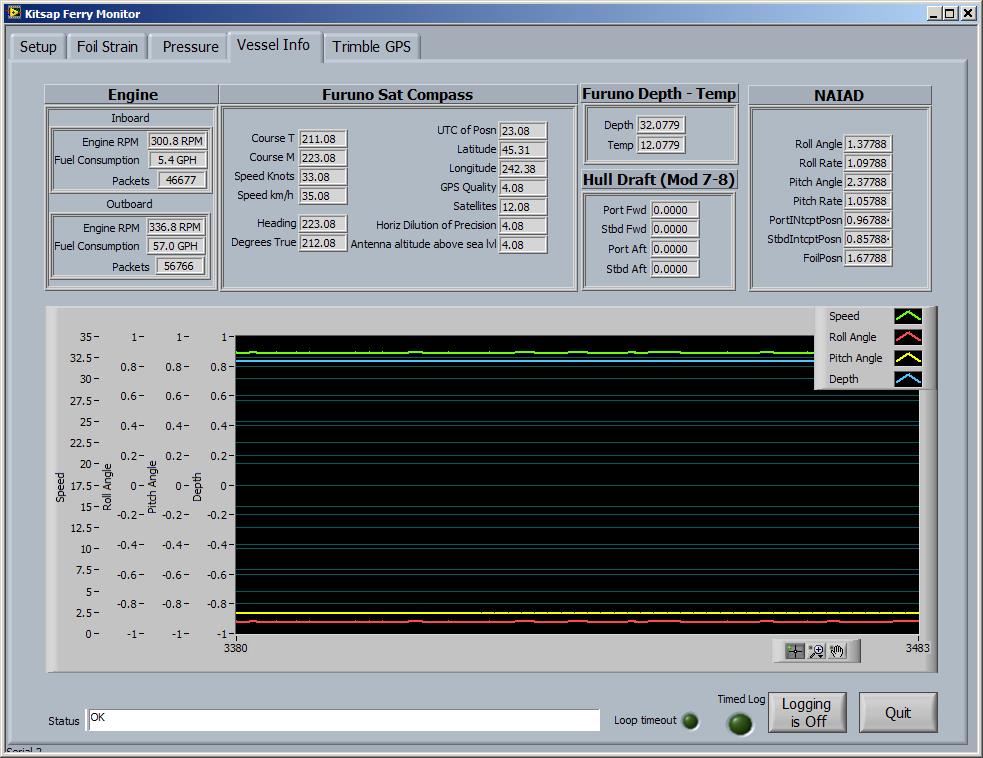The Challenge: An extensive hull strength test on an experimental low-wake ferry required realtime acquisition from a variety of I/O sources in a challenging physical environment.
The Solution: An NI Compact RIO chassis acquires CAN engine and hull strain/pressure data while an SB-RIO encapsulated in a composite cross-brace captures underwater foil performance.
The popularity of high-speed catamaran ferries has created problems for waterfront property owners that are affected by the relatively large wakes that comes from this ship design. Extensive use of composite materials in a ship’s hull creates a light-weight vessel, translating into a lower wake profile during transit. Using composite materials on the project required marine engineers to perform extensive stress and pressure testing on the composite members to ensure long-term performance. The hull design included a 4 meter underwater wing that helps to pull the vessel out of the water to reduce drag and minimize wake. The rake of the wing is set by ship speed and GPS position to trim the vessel based on a trade-off between ship hull wake performance and fuel economy. To keep sensors close to the DAQ system on the underwater wing, a National Instruments Single Board RIO system was encapsulated within a thin strut that held up the underwater wing that had sensors attached.
A Compact RIO system was used to pull in instrumentation data from marine serial NMEA sensor arrays and CANBUS based diesel engine interfaces. This data along with the SB-RIO data had to synchronize events with video feeds that allowed event recording to be correlated with strain and pressure data. The C-RIO and SB-RIO data was logged to an HMI on the bridge allowing investigators to evaluate the ship performance at various speed profiles through sea trials while capturing data for future analysis.
Ship Hull Monitoring
Computing Technologies
Contact us for a no obligation review of your requirements
L i g h t W a v e
LabVIEW Software Experts

